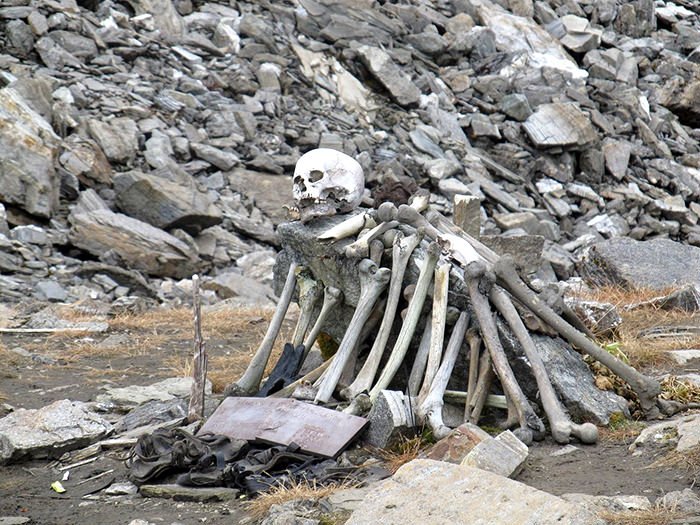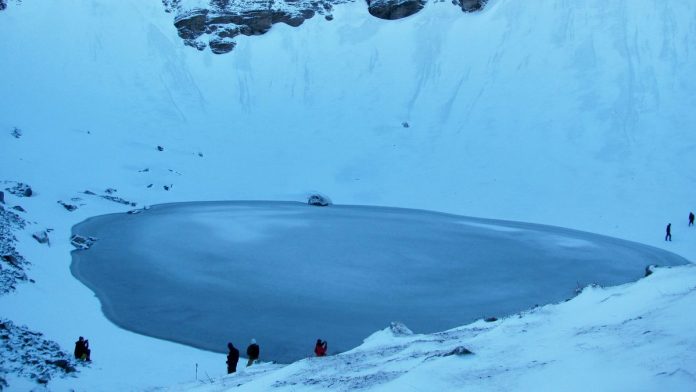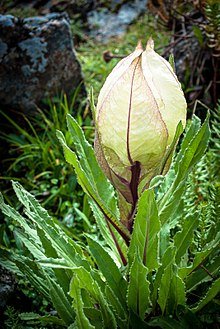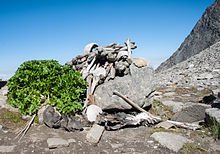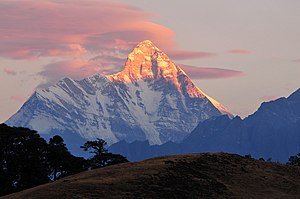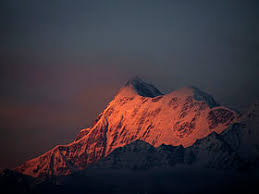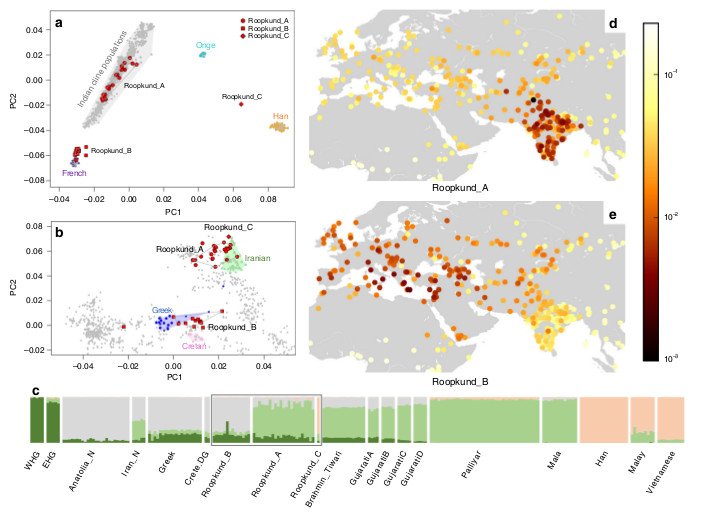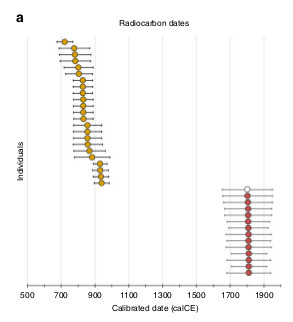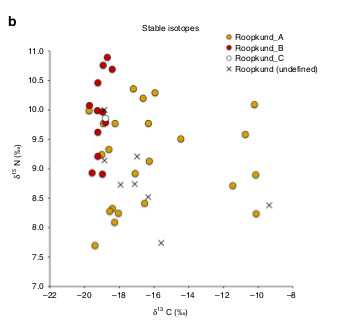In a previous thread ( ), I mentioned my interest in the use of DNA analysis for unraveling human migration.
But study of Ancient DNA can also throw light on other long standing mysteries, such as the one described in this thread!
Stories about bodies and skeletons at this lake were there in the area since long.
However Madhwal's was an “official” discovery.
Several bodies and skeletons in the normally frozen seemed to have become visible due to the melting ice.
Expeditions were mounted.
Samples of skeletons were collected and examined in labs.
Theories were formulated. Many of these theories were based on the fact that the Lake lies on the route of an arduous pilgrimage called “Nanda Devi Raj Jat”.
The way from Roopkund to Homkund is through the steep and treacherous “Jyunra Gali” (“Death Alley”).
One theory about the bodies was that these were pilgrims who slipped from the Gali and fell to their death.
Another theory was that these were bodies of troops of Kashmiri General Zorawar Singh, who got trapped in a storm while returning from a battle in Tibet in early 19th century.
Yet another speculated that the deaths were due to an epidemic.
Finally there was a theory based on a local legend about Raja Jasdhawal of Kannauj, his Queen Balampa and his entourage which included dancers.
Angry at dancers being brought on a pilgrimage, the Goddess was supposed to have sent hail stones and struck everyone down.
Anthropologist RS Negi was part of the first expedition to get back samples in 1956.
He wrote that 25%-35% of the samples were females. The average height varied from about 5'2” to 5'9”. Some individuals were less than 18 years of age.
Carbon dating studies showed that the samples could be ~500 to 900 years old, and belonged to various ethnic groups.
To investigate the Raja Jasdhawal theory anthropometric and blood group studies were done to check for a match with people of Kannauj region.
These studies ruled out some theories (the Gen Zorawar Singh story couldn't be true because that even happened only in the 19th century).
As new techniques became available fresh samples collected in 2003 were carbon dated and DNA analysed.
The samples seemed about 850 years old, and indicated similarity (of some samples) with Chitpawan Brahmins of the Konkan region.
Which brings us to the present study on Roopkund samples conducted by a group of leading scientists, which was published in @NatureComms magazine in 2019. (nature.com/articles/s4146…).
3 main tests were conducted:
- DNA was extracted from long bones of 38 samples and genome-wide data obtained and analysed
– “Stable Isotope” measurements were done on 45 samples to determine dietary patterns
– Direct radio carbon dates were obtained for 37 samples
A word about the approach used to derive ancestry information from genomic data.
The idea is to match the sample genome with reference data of various ethnic groups.
This is difficult because humans have thousands of genes and the data set is therefore very large.
“Principal Component Analysis”, a technique used to reduce large data sets to smaller sets while retaining original information, was used in this study to reduce the whole-genome data set, and compare it with known reference data from various ethnicities.
– None of them seemed related to any other, ruling out the possibility that they were from the same family
– No evidence was found of any pathogens, making it unlikely that they were wiped out in an epidemic
Results showed that the individuals had varied diets.
Group B and C individuals had more wheat, barley and rice in their diet.
Group A individuals had more varied diets, with some showing plant-based diet and others showing animal/plant mix.
So what does all this mean?
For one, the differences in genetic makeup, dates when they landed up in Roopkund, and what they ate indicates that the skeletons are of different groups of people from different eras.
One explanation that emerges by combining the several lines of evidence from this study, is that the at least some of the Group A individuals indeed died in a mass death event while on the Nanda Devi Raj Jat pilgrimage.
But who are the Group B individuals, of Mediterranean descent?
Their diet was predominantly plant based – which means they lived not on a coastal site but in an inland location.
But what were they doing at a wayside site of an obscure Hindu pilgrimage?
The same questions could be raised about the Group C individual (of East Asian descent).
Perhaps someone of that ancestry could be part of a Hindu pilgrimage?
But again, this is simply speculation.
What the study does once again show however, is how new biomolecular analysis techniques could uncover a lot of information which traditional archaeological techniques cannot.
--- ENDS ---

